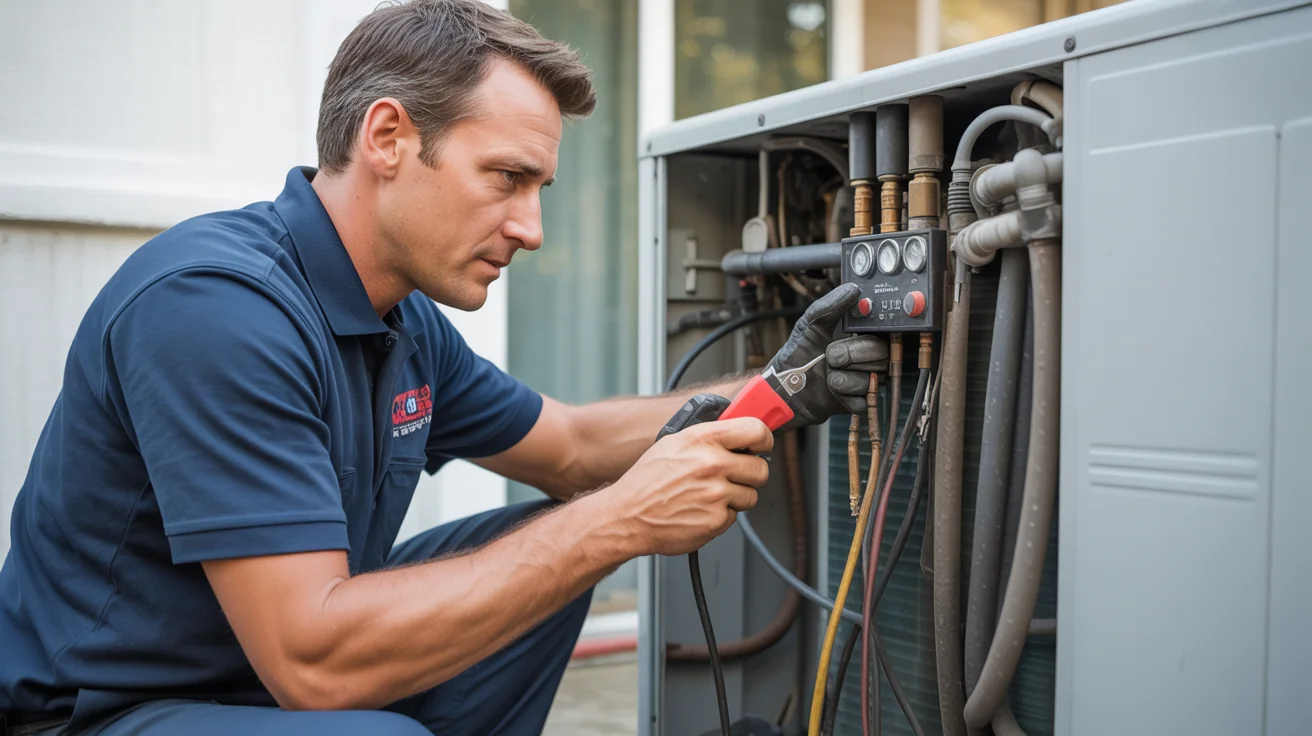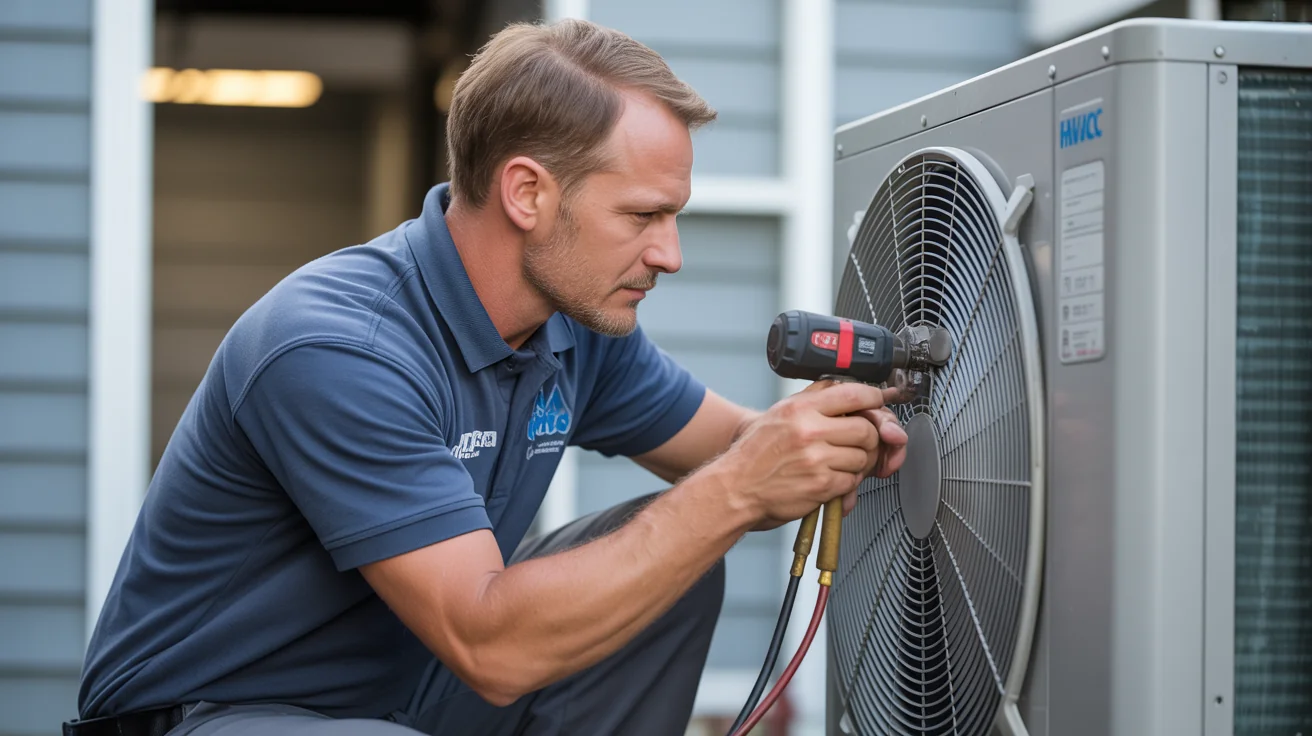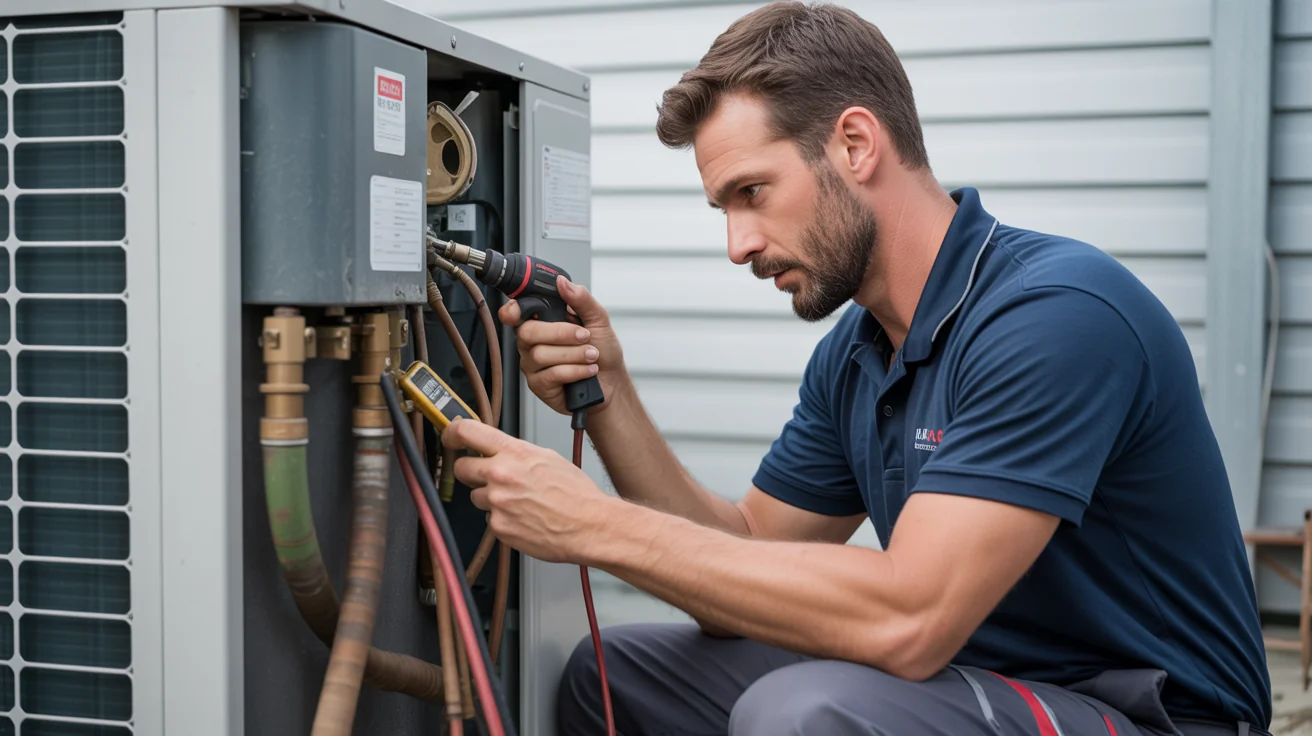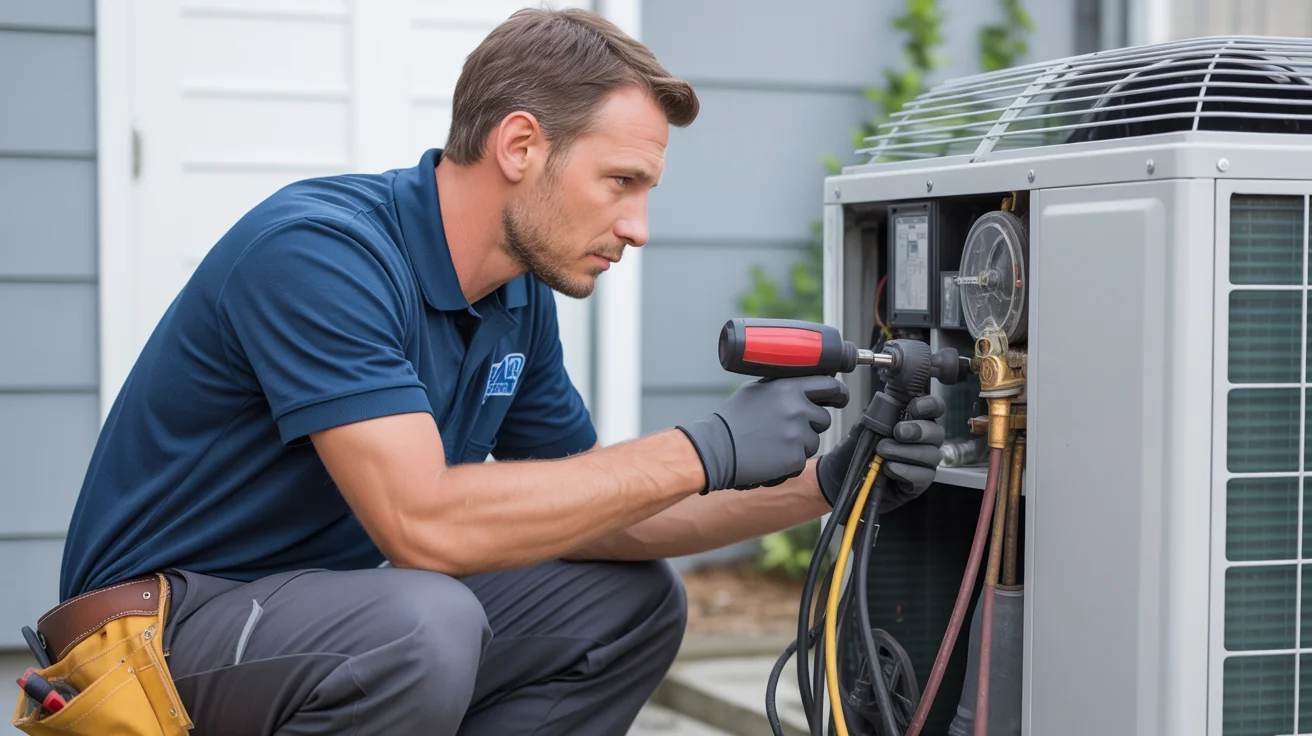Pre-Summer AC Tune-Up: What Techs Actually Do to Prevent $3,500 Failures
Complete pre-summer AC tune-up guide for North Texas. 27-point professional inspection process, DIY preparation steps, and timing strategy to prevent expensive failures.

The $189 Service Call That Could Have Prevented a $4,800 Disaster
May 15th, Allen, Texas. 95°F for the first time this season.
Sarah’s eight-year-old AC had been running perfectly all spring. Then at 2 PM on a Tuesday - right when her kids got home from school - the compressor seized with a grinding sound that made her stomach drop.
Emergency repair quotes ranged from $3,200 to $4,800. In May. When every HVAC contractor in Texas is swamped.
The killer? A dirty evaporator coil I could barely see through. Months of restricted airflow had forced her compressor to work 40% harder than it was designed for. Like running a marathon while breathing through a straw - eventually, something gives.
A simple $189 pre-summer tune-up would have caught this in March when we could have cleaned it leisurely, ordered parts without panic pricing, and saved her family thousands.
I learned this lesson the hard way during my second summer as a tech. Watched a perfectly good system commit suicide because the homeowner “didn’t think it needed maintenance.” Wrong. Dead wrong.
Here’s what North Texas does to unprepared AC systems: Morning starts at a comfortable 70°F. By 3 PM, we’re at 102°F and your system has been running nonstop for eight hours. This happens every day for six months straight.
Your system works harder in one Texas summer than most equipment works in three years anywhere else. Cedar pollen clogs condenser coils until they look like felt blankets. Humidity spikes during storms overwhelm drain systems that handle mild climates just fine.
I tell every customer the same thing: May 1st is your deadline. Miss it, and you’re rolling the dice with your family’s comfort and your bank account.
After May 1st, contractors start charging emergency rates because everyone suddenly remembers they have an AC system. Last May, I had customers waiting five days for service because they procrastinated. Five days sweating in 98°F heat to save $50 on early maintenance.
Don’t be that family.
Let me tell you exactly what happens during a real tune-up. Not the marketing BS, but what I actually do when I show up with my tools and 15 years of experience.
First Stop: The Electrical System (Because Loose Connections Kill)
I start here because loose electrical connections destroy more AC units than anything else. I pull out my digital multimeter and measure exact voltage and amperage on every single component.
Here’s what homeowners don’t understand: that connection that’s slightly loose in March becomes completely failed in July when summer heat makes everything expand. I’ve found contactors arcing inside electrical panels like little lightning shows. The homeowner had no clue their system was one failed connection away from burning down their house.
Yeah, I spend 15 minutes on electrical work that might look excessive. But I’ve seen too many house fires start in electrical panels.
Refrigerant Work: Where Real Techs Separate from Parts-Changers
This is where you find out if your tech actually knows what they’re doing. I connect my digital manifolds and measure superheat and subcooling to verify your system has exactly the right refrigerant charge. Not “close enough” - exactly right.
I’ve found systems cooling fine but hemorrhaging money - using 30% more electricity because they were slightly low on refrigerant. One customer in Frisco was paying an extra $80 per month in electric bills. Nobody had bothered to check their refrigerant levels in three years.
Twenty minutes of proper analysis saved them hundreds of dollars.
Then I run my electronic leak detector over every connection. I’ve found pinhole leaks smaller than pencil tips that would have killed systems by mid-July. Better to find them in March when we can fix them right.
Coil cleaning is where I spend the most time because dirty coils kill compressors faster than anything else. I use commercial-grade coil cleaners and high-pressure rinse equipment - not the spray bottles homeowners buy at hardware stores.
After cleaning, I measure static pressure through the system to verify airflow is optimal. I’ve seen dirty evaporator coils create so much restriction that systems were working 40% harder just to move air. That extra work destroys compressors by mid-summer.
The temperature differential test tells me everything about system performance. Supply air should be 18-22 degrees cooler than return air. If it’s not, I know exactly where to look for problems.
Thermostat calibration seems minor until you realize a 2-degree error costs homeowners hundreds annually. I use calibrated digital thermometers to verify thermostat accuracy at multiple temperature points.
I test every safety control to make sure they’ll actually protect the system when needed. High-pressure switches, low-pressure switches, freeze stats - they all get tested. I’ve found safety controls that had been bypassed by previous “technicians” who didn’t want to diagnose the real problem.
The Maintenance Timeline That Prevents 90% of Failures
Proper timing isn’t just convenient—it’s critical for preventing peak-season disasters:
Seasonal Maintenance Impact
| Service Timing | Cost | Availability | Prevention Rate |
|---|---|---|---|
| March (Early) | $165-189 | Same week | 92% of failures |
| April (Optimal) | $189-225 | 1-2 weeks | 87% of failures |
| May (Late) | $225-275 | 2-3 weeks | 78% of failures |
| June (Emergency) | $350-450 | 3-5 days | 65% of failures |
| July+ (Crisis) | $500+ | 1-2 weeks | 45% of failures |
#Here’s the timeline that actually works, based on 15 years of North Texas summers:
March is your sweet spot. Contractors aren’t swamped yet, parts are available, and you get better pricing. I have regular customers who book their March appointments in January because they understand the system.
By April, good contractors are getting busy but still available. May is panic time - everyone suddenly realizes summer is coming. I’ve seen customers pay double for emergency tune-ups in May that would have cost half as much in March.
While you’re waiting for professional service, tackle the DIY prep that actually makes a difference:
Replace your filter, but do it right. Take a photo of the old filter before removing it - the size and type are printed on the frame. I’ve seen homeowners install backwards filters that restricted airflow for months.
Walk around your outdoor unit and clear everything within three feet. I’ve found everything from kids’ toys to garden tools crammed against condenser coils. Your AC needs breathing room.
Test your thermostat by dropping the temperature 5 degrees and making sure the system responds. If it doesn’t kick on within two minutes, call for service before the rush.
For a complete seasonal preparation guide, review our spring AC startup checklist with detailed DIY steps.
MAY: Final System Test
First 90°F Day Protocol:
-
Run AC for 2+ hours on hottest day
-
Monitor performance and note any unusual sounds or smells Critical insight: first hot day reveals problems that weren’t apparent.
-
Call immediately if performance issues detected
Here’s the thing - if your AC isn’t cooling properly during this test, use our no cooling troubleshooting checklist before calling for service.
Pro Timing Secret: Schedule your tune-up for a Tuesday-Thursday in March. You’ll get the technician’s full attention, better pricing, and first priority if any issues are discovered.
Let me share what I actually find during tune-ups that homeowners never see:
Capacitors are the heartbreakers. They weaken gradually through heat cycles, giving no warning before they fail completely. I test capacitance on every unit because a failing capacitor will kill your compressor on the hottest day of summer.
I carry capacitors on every service call because I find weak ones constantly. A $180 capacitor replacement during a tune-up prevents a $4,000 compressor failure in July.
Refrigerant leaks are sneaky. The system keeps cooling while slowly bleeding refrigerant, working harder every day until something major fails. I’ve diagnosed systems that lost 40% of their charge over two years - the homeowner just thought their electric bills were “normal.”
3. Drain Line Blockages (Found in 25% of units) Slow clogs gradually worsen into complete blockages that cause extensive water damage to ceilings, walls, and flooring. Prevention Cost: $45-75 | Water damage: $2,000-8,000.
4. Electrical Connection Issues (Found in 20% of units) Loose electrical connections create dangerous heat buildup that leads to component failure and potential fire hazards. Tightening Cost: included in tune-up | Failure cost: $300-1,500.
Dirty evaporator coils hide inside your system where you’ll never see them. I’ve pulled coils so clogged with debris they looked like felt carpet. The system was moving maybe 60% of designed airflow, working itself to death trying to cool the house.
These coils cost $250 to clean properly, but when they freeze your system and kill your compressor, you’re looking at $3,500 in repairs.
6. Thermostat Calibration Issues (Found in 15% of units) Inaccurate thermostats waste significant energy and create comfort problems by calling for heating or cooling at incorrect temperatures. Calibration Cost: $75-125 | Energy waste: $200-400/year.
7. Blower Motor Strain (Found in 10% of units) Dirty filters and coils create excessive resistance that overworks blower motors, causing premature failure during peak demand periods. Preventive Cost: filter changes | Motor replacement: $800-1,200.
The Real Cost Analysis
Let’s break down the true value of preventive maintenance:
5-Year Cost Comparison
| Maintenance Approach | Annual Cost | Major Repairs | Energy Waste | Total 5-Year Cost |
|---|---|---|---|---|
| No Maintenance | $0 | $12,000 | $4,200 | $16,200 |
| Basic DIY Only | $150 | $8,500 | $2,800 | $12,050 |
| Annual Professional | $950 | $2,200 | $850 | $4,000 |
| Comprehensive Program | $1,500 | $500 | $200 | $2,200 |
Maintenance ROI Reality: Customers who invest in annual tune-ups save an average of $2,800 annually compared to reactive maintenance. That’s a 1,400% return on investment.
Advanced DIY Inspection Techniques
For homeowners who want to go beyond basics:
The 5-Minute Professional Assessment
Temperature Drop Test Your AC should cool air by 18-22°F between return and supply vents.
- Measure return air temperature (usually at large vent)
- Measure supply air temperature (at ceiling vents)
- Calculate difference: Return temp - Supply temp
- If less than 15°F difference = call for service
Visual Inspection Checklist
What to look for during your monthly check:
- Ice Formation: Any frost on refrigerant lines indicates problems
- Water Stains: Ceiling or wall stains near vents suggest drain issues
- Unusual Sounds: Grinding, squealing, or clicking from outdoor unit
- Airflow Changes: Weak airflow from some vents but not others
Homeowner FAQ
Q: How do I know if my tune-up was actually complete? A: A proper tune-up should include written reports with actual measurements (temperatures, pressures, amp draws) rather than generic checklists. Before/after photos of coil cleaning demonstrate actual work performed and system improvement. Specific recommendations with detailed cost estimates help you prioritize future maintenance and repairs. Service time of 60-90 minutes minimum ensures thorough system evaluation rather than superficial checks. Testing of all safety systems and controls verifies protection mechanisms will work when needed.
Q: What if problems are found during the tune-up? A: Good contractors will explain issues clearly using photos and actual measurements to demonstrate problems. Written estimates for repairs should include parts, labor, and timeline details for transparent pricing. Repairs should be prioritized by urgency, distinguishing between immediate safety concerns and efficiency improvements. Multiple options (repair vs. replacement) help you make informed decisions based on your budget and system age. The tune-up should be completed regardless of repair decisions to ensure you get full service value.
Q: Should I be present during the tune-up? A: Yes, if possible. Being present allows you to ask specific questions about your system’s operation and get personalized advice for your home. You can learn basic maintenance tasks that prevent problems between service calls. Understanding any issues found helps you make informed repair and replacement decisions. Verifying work completion ensures you receive full service value and can ask follow-up questions. Getting tips for improving efficiency can reduce your energy costs year-round.
Q: What’s included in Jupitair’s complete tune-up? A: Our comprehensive 27-point inspection includes complete electrical system testing with voltage and amperage measurements for all components. Refrigerant level verification and leak detection using professional-grade equipment ensures optimal cooling efficiency. Deep coil cleaning for both indoor and outdoor units removes efficiency-robbing dirt and debris. Thermostat calibration and programming optimization maximizes comfort while minimizing energy costs. Written performance reports with specific recommendations help you plan future maintenance and improvements. Our 30-day callback guarantee provides peace of mind and ensures complete satisfaction.
Q: When should I schedule if I missed the March deadline? A: April is still optimal timing, though costs may be slightly higher. Don’t wait past early May, as availability becomes limited and emergency rates apply.
Here’s your action plan that actually works:
This month, stop reading about tune-ups and schedule one. Every day you wait moves you closer to emergency pricing and extended wait times. I’ve seen too many customers procrastinate their way into July emergencies.
Call immediately if you notice: Complete loss of cooling on hot days, ice anywhere on your system, strange noises that weren’t there before, or water where it shouldn’t be. These aren’t “wait and see” problems - they’re “call now before it gets expensive” problems.
For immediate emergency service, our 24/7 emergency repair team responds within 2 hours.
Look, I’ve been doing this for 15 years, and I’ve seen what happens when people skip maintenance. The lucky ones just pay higher electric bills all summer. The unlucky ones spend August in a hotel while waiting for compressor replacement.
Professional tune-ups are the best money you’ll spend on your house. For less than two tank fills of gas, you get peace of mind knowing your system is ready for whatever Texas summer throws at it.
Don’t Wait - Schedule Now Complete AC maintenance services start at just $189 for comprehensive system evaluation and optimization. March appointments are still available but fill quickly as homeowners prepare for summer heat. Every service includes a detailed written report documenting everything we check and any recommendations for optimal performance. Our 30-day callback guarantee ensures complete satisfaction and provides follow-up service if any issues develop after maintenance.
Ready to skip the summer emergency calls and enjoy reliable cooling? Call (940) 390-5676 for immediate scheduling. Book online if you prefer digital scheduling. Ask about our annual maintenance plans for priority service. Don’t wait - may deadline comes fast.
Local Service Areas: Frisco | Plano | McKinney | Allen
Last updated: August 22, 2025 | Based on 1,200+ North Texas tune-ups | Pricing reflects current market rates
Jupitair HVAC serves all of North Texas including Plano, Frisco, McKinney, Allen, and surrounding areas. Licensed & Insured.
Continue Reading: Seasonal HVAC Preparation Guide
🌸 Spring Preparation
Our Complete Spring AC Startup Checklist provides step-by-step preparation for cooling season success. The comprehensive Spring HVAC Maintenance Guide covers all aspects of seasonal preparation. The Monthly Maintenance Checklist ensures year-round system care and optimal performance.
☀️ Summer Maintenance
The Summer AC Maintenance Schedule provides essential peak season care tips for Texas heat. Our Energy-Saving AC Settings guide helps optimize efficiency during heat waves and reduce utility costs. The comprehensive Summer Cooling Optimization Guide gives you everything needed to beat the Texas heat.
🚨 Emergency Preparedness
The No Cooling Emergency Checklist provides critical DIY troubleshooting steps for cooling failures. Our Emergency HVAC Troubleshooting guide offers quick fixes you can try before calling professionals. The Frozen Evaporator Coil Guide addresses this common summer AC problem with safe solution steps.
💰 Cost Planning
Our AC Repair Cost Guide 2025 helps you budget for potential repairs and replacement decisions. The HVAC System Maintenance Procedures guide compares professional vs. DIY costs for informed maintenance planning.
🏘️ Local Service Information
Local services include Frisco AC Maintenance for professional tune-up services. Plano HVAC Services provides comprehensive maintenance programs for all system types. McKinney AC Care offers expert professional tune-ups and system optimization. Allen Emergency Service ensures 24/7 availability for urgent cooling needs.
Ready for worry-free cooling? Call (940) 390-5676 to schedule your pre-summer tune-up before the May rush!
Need Professional HVAC Service?
Our certified technicians are ready to help with any HVAC needs in North Texas




